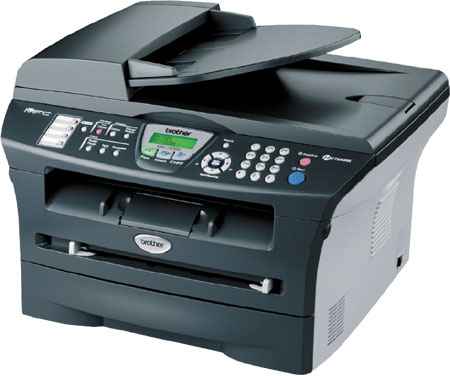To debug frame-relay there are several possibilities.
The first useful command is:
sh frame-relay pvc
With this command you could list all currently configured pvc’s.
This may look like:
DLCI = 314, DLCI USAGE = LOCAL, PVC STATUS = ACTIVE, INTERFACE = Serial1/1
input pkts 1 output pkts 0 in bytes 30
out bytes 0 dropped pkts 0 in pkts dropped 0
out pkts dropped 0 out bytes dropped 0
in FECN pkts 0 in BECN pkts 0 out FECN pkts 0
out BECN pkts 0 in DE pkts 0 out DE pkts 0
out bcast pkts 0 out bcast bytes 0
5 minute input rate 0 bits/sec, 0 packets/sec
5 minute output rate 0 bits/sec, 0 packets/sec
pvc create time 00:23:07, last time pvc status changed 00:23:07
Note the pcv ACTIVE status. This indicates the pvc is up and running and lmi messages are being send to and from the frame-relay switch .
The PVC can have four possible states. These are shown by the PVC STATUS field as follows:
- ACTIVE – PVC is up and functioning normally.
- INACTIVE – PVC is not up end-to-end. This may be because either there is no mapping (or incorrect mapping) for the local DLCI in the frame-relay cloud or the remote end of the PVC is Deleted.
- DELETED – Either the Local Management Interface (LMI) is not exchanged between the router and the local switch, or the switch does not have DLCI configured on the local switch.
- STATIC – no keepalive configured on the frame-relay interface of the router.
It’s also a good idea, if you have change frame-relay your configuration on an interface, to reload the router. Just to make sure, no old configuration settings are interferring.
The DLCI status can be one of the following:
The DLCI USAGE field contains one of the following entries:
- SWITCHED – the router or access server is used as a switch.
- LOCAL – the router or access server is used as data terminal equipment (DTE).
- UNUSED – the data-link connection identifier (DLCI) is not referenced by user-entered configuration commands on the router.
To find out something about the lmi layer 2 communications between the frame-relay devices you can use:
debug frame-relay lmi
This could also show some information about the satus of the frame-relay link:
*Mar 1 08:51:53.615: Serial1/1(out): StEnq, myseq 43, yourseen 41, DTE up
*Mar 1 08:51:53.615: datagramstart = 0x7B00854, datagramsize = 13
*Mar 1 08:51:53.615: FR encap = 0xFCF10309
*Mar 1 08:51:53.615: 00 75 01 01 00 03 02 2B 29
*Mar 1 08:51:53.615:
*Mar 1 08:51:53.631: Serial1/1(in): Status, myseq 43, pak size 45
*Mar 1 08:51:53.631: RT IE 1, length 1, type 0
*Mar 1 08:51:53.631: KA IE 3, length 2, yourseq 42, myseq 43
*Mar 1 08:51:53.631: PVC IE 0x7 , length 0x6 , dlci 311, status 0x0 , bw 0
*Mar 1 08:51:53.631: PVC IE 0x7 , length 0x6 , dlci 312, status 0x0 , bw 0
*Mar 1 08:51:53.631: PVC IE 0x7 , length 0x6 , dlci 314, status 0x2 , bw 0
R3#
*Mar 1 08:51:53.631: PVC IE 0x7 , length 0x6 , dlci 315, status 0x2 , bw 0
As you can see the lines with „status 0x0“ or „status 0x2“ this could tell you:
Notice the status of „DLCI 314“ in the output above. The possible values of the status field are explained below:
- 0x0-Added/inactive means that the switch has this DLCI programmed but for some reason (such as the other end of this PVC is down), it is not usable.
- 0x2-Added/active means the Frame Relay switch has the DLCI and everything is operational. You can start sending it traffic with this DLCI in the header.
- 0x3-0x3 is a combination of an active status (0x2) and the RNR (or r-bit) that is set (0x1). This means that the switch – or a particular queue on the switch – for this PVC is backed up, and you stop transmitting in case frames are spilled.
- 0x4-Deleted means that the Frame Relay switch doesn’t have this DLCI programmed for the router. But it was programmed at some point in the past. This could also be caused by the DLCIs being reversed on the router, or by the PVC being deleted by the telco in the Frame Relay cloud. Configuring a DLCI (that the switch doesn’t have) will show up as a 0x4.
- 0x8-New/inactive
- 0x0a-New/active
List your static and dynamic mappings and show also witch link is active or has a differnt status:
show frame-relay map
Serial0/0 (up): ip 183.1.0.3 dlci 405(0x195,0x6450), static,
CISCO, status deleted
Serial0/0 (up): ip 183.1.0.5 dlci 405(0x195,0x6450), static,
broadcast,
CISCO, status deleted
or for example:
Serial0/0 (up): ip 183.1.0.4 dlci 504(0x1F8,0x7C80), static,
broadcast,
CISCO, status defined, active
Serial0/0 (up): ip 54.1.1.6 dlci 504(0x1F8,0x7C80), dynamic,
broadcast,, status defined, active
Source:
http://www.cisco.com/univercd/cc/td/doc/product/software/ios120/120newft/120limit/120s/120s12/12sfrsdg.htm
http://www.cisco.com/en/US/tech/tk713/tk237/technologies_tech_note09186a008014f8a7.shtml






